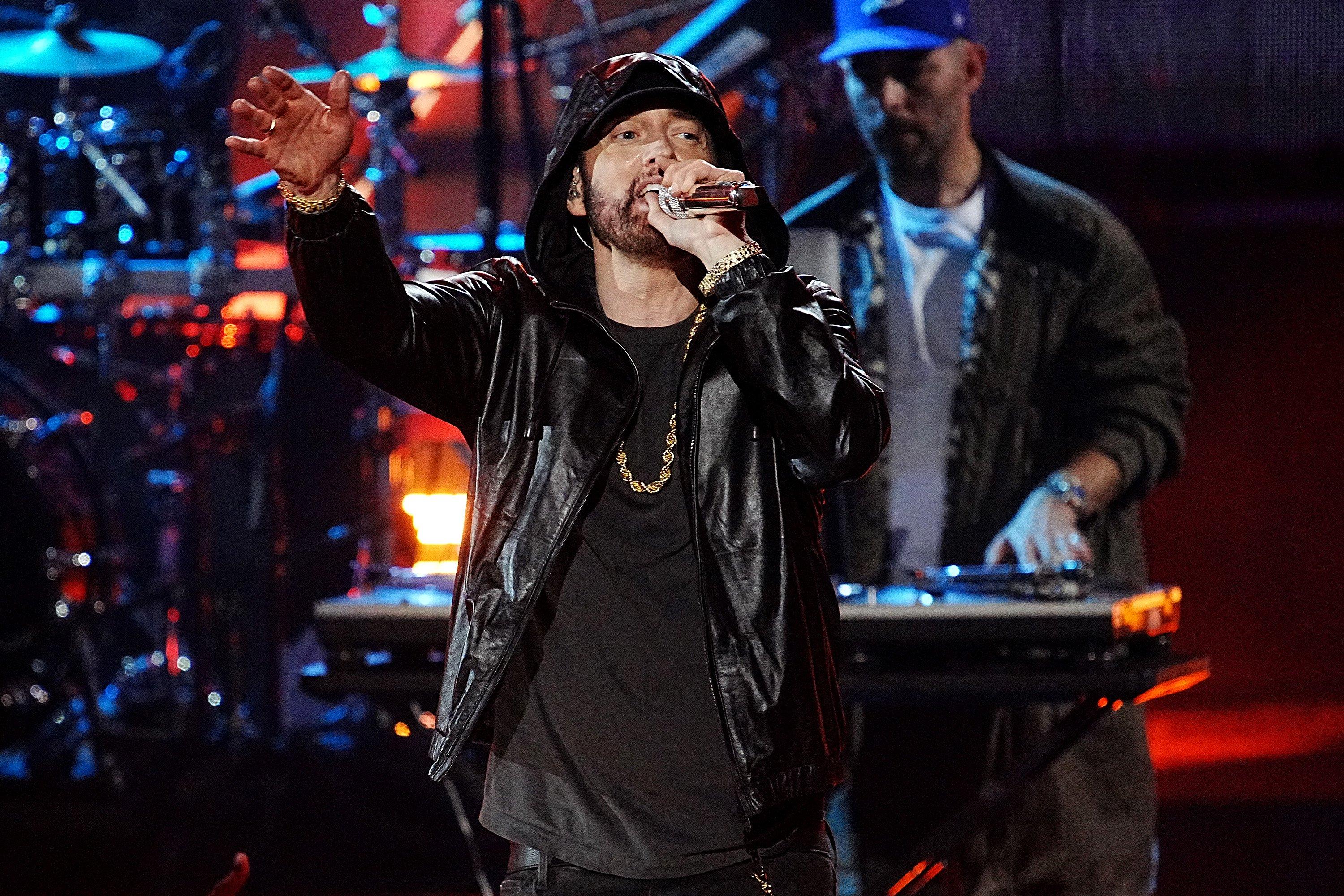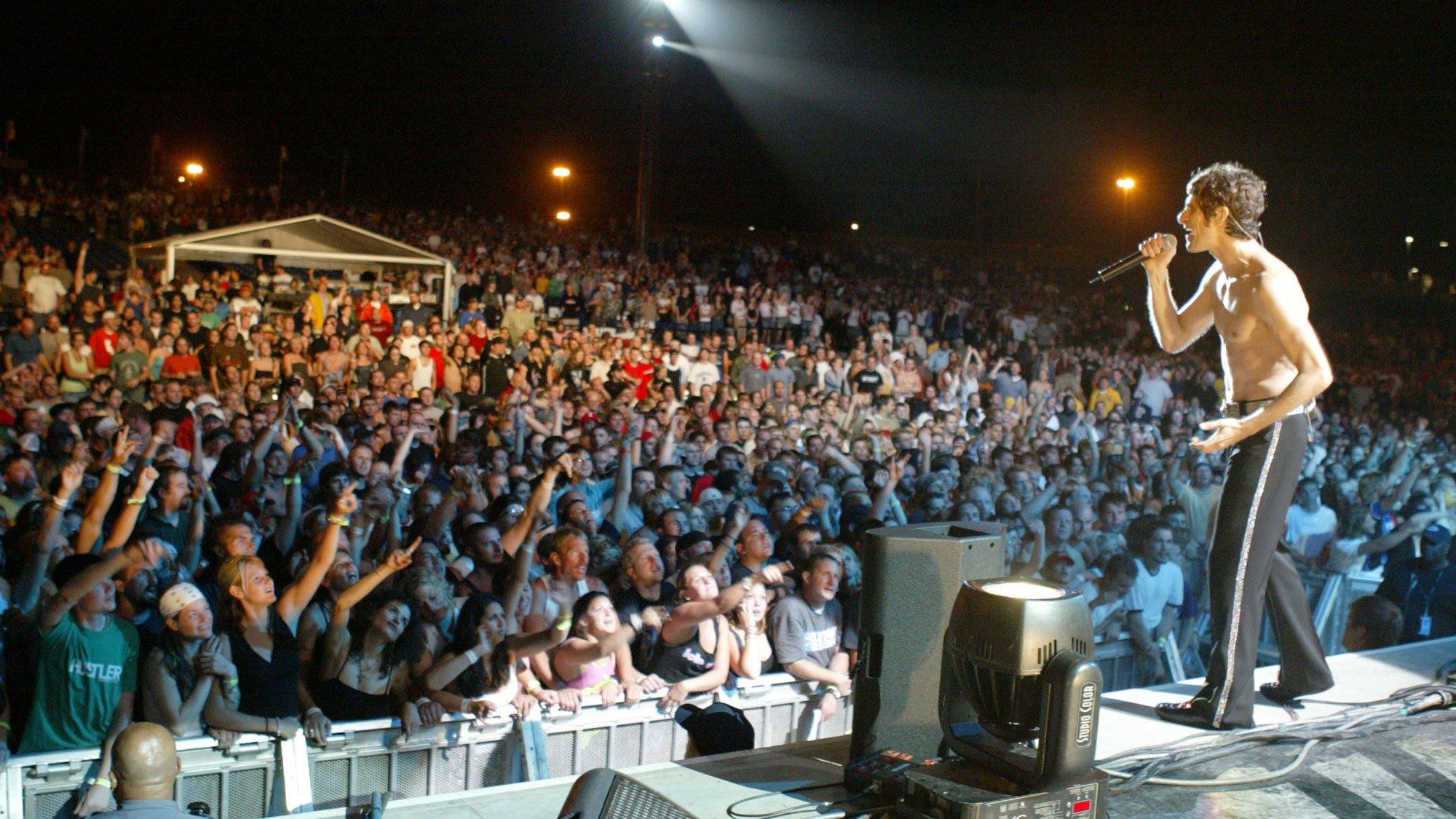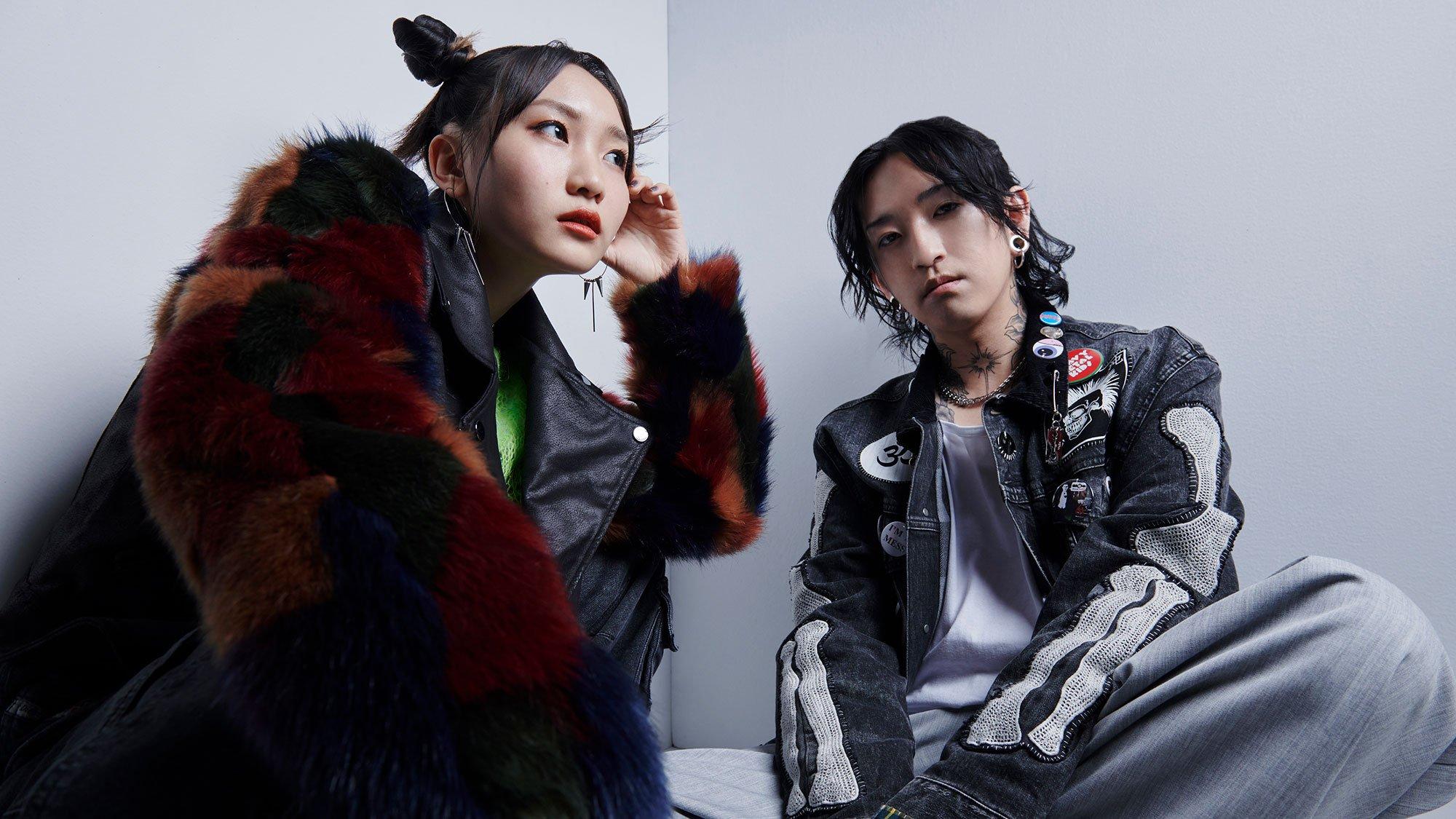Few music festivals have had the cultural impact of Lollapalooza.
Conceived in 1991 as a farewell tour for Jane's Addiction by lead singer Perry Farrell, the festival quickly became a traveling showcase for alt-rock and counterculture. Its eclectic lineups, which also included punk, metal, and hip-hop acts, helped define a generation's musical tastes.
A new, three-episode documentary, "Lolla: The Story of Lollapalooza," takes an in-depth look at the festival's journey over three decades. From its early days of bringing together alt acts including Nine Inch Nails, Living Colour, Pearl Jam, and the Beastie Boys, Lollapalooza has evolved into what it is today: a three-day festival based in Chicago's Grant Park since 2005. The festival remains an enduring celebration of alternative music.
"Lolla" explores how Lollapalooza defied expectations by both embracing and helping shape the emerging youth culture of the '90s — a rebellious, introspective shift from the flashy excess of the '80s. The docuseries highlights the festival's influence through a trove of archival footage and exclusive interviews with Lollapalooza co-founders, show promoters, bookers, MTV hosts. Of course, "Lolla" features a who's who of '90s-era rockers — including Farrell himself, Flea from Red Hot Chili Peppers, Tom Morello of Rage Against The Machine, Trent Reznor from Nine Inch Nails, Donita Sparks from L7, Ice-T.
To watch "Lolla" is to open a time capsule for alternative culture, one where the stage becomes a symbol of generational change. Read on for five takeaways from the documentary, which is now streaming on Paramount+.
The Reading Festival Served As Inspiration
For their farewell tour, Jane's Addiction decided to emulate the UK Reading Festival's approach to curating live music and alternative acts in a multi-day, open-air forum (where bands like the Buzzcocks and Pixies played to crowds of 40,000).
Jane's Addiction had been scheduled to play the 1990 Reading Festival, but Farrell partied too much the night before after a club gig and lost his voice, and the band had to cancel. Drummer Stephen Perkins and future Lollapalooza co-founder Marc Geiger decided to check out the event anyway, which planted the seed for the future tour.
"Reading was a cornucopia of artists, and scenes, and curation, and it was such a vibe," recalled Geiger in an interview scene from the doc. "I remember saying, 'Perry, we have to do it.'"
Farrell was game after missing his chance to see Reading first-hand. So Lollapalooza co-founders Geiger, Don Muller and Ted Gardner, who was also Jane's Addiction band manager, got to work emulating the Reading model. In addition to live music, Farrell wanted something "completely subversive" with booths to engage festival goers with everything from henna tattoos and art galleries, to nonprofit and political organizations like Greenpeace, PETA, the Surfrider Foundation, and even voter registration for the Rock The Vote campaign. The result was art and activism combined with commerce.
Lolla Was Born From The Death Of Jane's Addiction
Although Jane's Addiction had a big buzz with their third album, Ritual de lo Habitual, the band was on the edge of dissolution. "We really couldn't stand each other," admitted Farrell. Ready for his next act, Farrell saw the opportunity to end on a high note with Jane's Addiction. "The best work we did, we left on the stage at Lolla," he said in the doc.
In the early '90s, alternative acts were not selling out massive venues. Organizers were on edge, hoping fans would buy tickets and show up to not one, but 28 U.S. tour dates featuring the seven-act lineup for the first-ever Lollapalooza.
What nobody expected was the watershed success. The first show saw fans sweat it out to see their favorite acts in Phoenix, on a day with temperatures well over 100 degrees. Nine Inch Nails' equipment melted in the heat, leading the band to destroy their failing gear before walking off the stage.
Despite initial hiccups, the tour wasn't hindered. Lollapalooza's first year sold out in a majority of venues holding 15-18,000 people, driven largely by word-of-mouth and favorable coverage by MTV.
"I think everybody knew and ultimately felt, 'wow, I'm sort of lucky to be here — I'm part of something,'" recalled Geiger in the doc. "It was bigger than anything these artists or fans had seen at that time."
Lollapalooza '92 further mixed genres on the main stage — like gangsta rap (Ice Cube), grunge (Pearl Jam) and shoegaze (Lush) — while greatly expanding the line-up on a side stage upon which Farrell and Perkins introduced their new band Porno For Pyros, alongside many other acts. Lollapalooza's model was born.
Early Years Embraced Racial Inclusivity, But Lagged Gender-Wise
Right from the start, Lollapalooza organizers mixed up the bill beyond white artists that traditionally headlined rock concerts long before and after Jimi Hendrix performed at Woodstock and Monterey Pop. Part of why Lollapalooza thrived is the inclusion of bands like Ice-T's Body Count, Fishbone, and Living Colour — favorite headliners during the early tours.
Rage Against The Machine guitarist Tom Morello credited Living Colour with helping build "the alternative arc" and opening doors for Rage. "Without Living Colour, Rage Against The Machine doesn't get a record deal. Ever," Morello said.
A big moment came near the end of the '91 tour when Ice-T and Farrell squared off to cover Sly and the Family Stone's "Don't Call Me ******, Whitey" in which they tersely trade verses, then end up tangoing across the stage. It was a provocative performance that grabbed headlines and the audience's attention months after the high profile police beating of Rodney King in Los Angeles. In '92, Soundgarden showed solidarity with Body Count by performing their controversial track "Cop Killer" with their guitarist Ernie C onstage in Miami.
While Lolla embraced racial diversity, the early line-ups were male-dominated. Lone female act Siouxsie and the Banshees were a favorite in '91 and later Lollapalooza main stage artists, like Sonic Youth, Babes In Toyland, Lush, and the Breeders — which had more if not all female members — were outnumbered by their male counterparts.
Read more: 6 Female-Fronted Acts Reviving Rock: Wet Leg, Larkin Poe, Gretel Hänlyn & More
Donita Sparks noted that L7 got booked in '94 only after they fired off a bluntly worded fax to the organizers. "We got the offer," Sparks said, "but we had to push the issue. And we had to fight for it. 'Cause that's how much we wanted to be on Lollapalooza, and more importantly, that's how much we felt we deserved to be on Lollapalooza.
Female artists would eventually receive their Lolla dues, with Billie Eilish, Lorde, HAIM, Miley Cyrus and Karol G performing as festival headliners, and artists like Lady Gaga starting out as side stage artists before exploding in popularity and returning to headline the fest a few short years later.
It Became A Victim Of Its Own Success
Lollapalooza from years '91 to '93 were the purest in terms of alt-rock acts, but as the event drew a wider range of talent and demand, it began to suffer a bit of an identity crisis. After all, it's hard to be a beacon for the underground scene once that culture is above ground.
By Lolla '94, attendance set records and alt-rock had hit the mainstream while grunge peaked and critics bemoaned its growing conventional status. Former second stage booker John Rubeli revealed that Nirvana turned down a $6 million offer to headline the '94 tour because of frontman Kurt Cobain's fear of selling out. Cobain's suicide a few short weeks later changed the scene.
In '95, the festival returned with more indie bands on the mainstage, but some were eclipsed by bigger artists like Coolio, who drew a bigger crowd to the parking lot side stage. Increased popularity drove commercial sponsorship, and the event became more expensive. Ticket sales dropped. Then in '96, Farrell quit his involvement with the festival for a year in protest over the booking of Metallica, whose aggressive music and audience he felt were out of step with his vision.
"I felt disrespected," Farrell said. "I'm not putting this thing together to make the most money. I'm putting this thing together to make the most joy."
Upon his return in 1997, Farrell's inclusion of electronic acts like the Orbital and the Prodigy were, to some ears, ahead of the curve. The festival then went on a six-year hiatus.
Lollapalooza returned on shaky legs for its 2003 tour, which included Audioslave, Incubus, the Donnas, and the reunion of Jane's Addiction. But it was truly reborn in 2005 as a three-day event in Chicago through concert promoters C3 Presents (who co-executive produced the "Lolla" doc). Admittedly, some of the 21st century headliners like Lady Gaga, Miley Cyrus, Journey, and Paul McCartney would never have fit the '90s festival bill.
Times have changed and, today, the festival has embraced its conventional success while retaining its original genre-spanning reach with the Killers, Melanie Martinez, Skrillex, and Tyler, the Creator included on this summer's lineup.
Lolla Was A Model For Coachella, Bonnaroo, And Beyond
Prior to the arrival of Lollapalooza, rock festivals were usually single weekend events that took place in a fixed location, like Woodstock in '69, Steve Wozniak's US Festival in '82 and '83, and European festivals like Reading. "I just think it's the first American, truly eclectic concert series since Woodstock," said Ice-T. "And even Woodstock wasn't as eclectic because Woodstock was pretty much all rock."
Lollapalooza's successful tour format inspired other popular tours and live events, especially in the mid-'90s. During the festival's break during the late '90s and early 00's, niche festivals like Ozzfest, Vans Warped Tour, and Lilith Fair stole the show. These festivals not only continued Lollapalooza's legacy by bringing diverse genres to cities across the country, but transformed the live music scene into a cultural phenomenon.
While epic, genre-spanning weekend festivals like Coachella and Bonnaroo have been raging since the early aughts, Lollapalooza first proved that a seemingly radical idea could grow and thrive. Incorporating a mix of rock, hip-hop, electronic, and alternative acts, inclusivity and mobility became a festival blueprint. Today, Lollapalooza is tapping into international audiences and local music scenes with versions of the festival in Argentina, Berlin, Stockholm, Paris, and even Mumbai.
Lollapalooza's success proves that the media and music industry often don't realize the size and passion of certain scenes and subcultures until they're brought together in the right setting. By uniting diverse musical acts and their fans, Lollapalooza highlights eclectic talent but also shows just how much people crave that representation and diversity.
Music Festivals 2024 Guide: Lineups & Dates For Lollapalooza, Coachella, Bonnaroo & Much More




